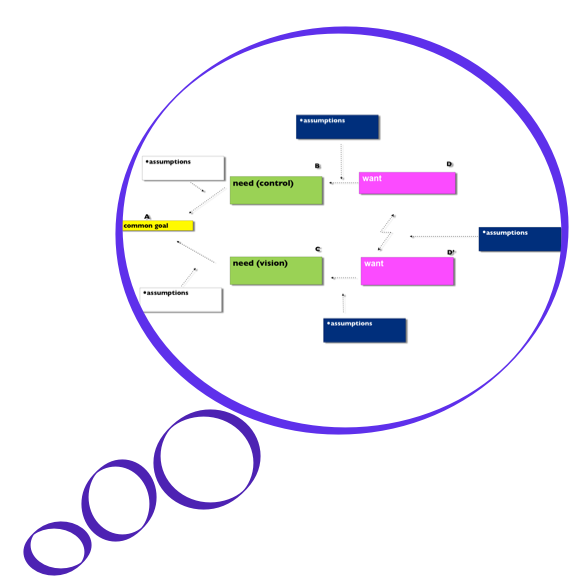
We may think we know how to think, but can we do it better? This post looks at some tools for systematic, creative thinking for business (and beyond).
A recent article in the Globe and Mail newspaper asks the question, how can we produce more creative business thinkers? What sort of things should business schools be teaching to make that happen?
Neil Turok, Physicist and the director of the Perimeter Institute for Theoretical Physics in Waterloo, Ont. answered:
“I’d want to show students how to see vast opportunities where everyone else sees nothing but problems – and also to realize who you are and to play to your strengths.”
Business vs. creativity
Many people imagine business to be a highly rational endeavour. The truth can be very different. Much of business is conducted on the basis of personalities, emotions, desires and fears. Moreover, there is a growing need for creativity in all aspects of business in an increasingly complex world.
The question is, can there be a way to systematically increase our ability to think creatively and solve problems in an innovative way? In our experience, there is.
Tools for creative business thinking
A set of Thinking Process Tools has been created by Dr. Eli Goldratt, an Israeli physicist who developed the Theory of Constraints. These tools address all aspects of conducting business, from solving day-to-day conflicts, to designing whole system strategy and implementation. The tools leverage our ability to shift from intuition, through to analysis and wise action. They address both logic and emotion, and indeed we have come to see them as catalysts for intelligent emotions.
At Intelligent Management, we have been using these tools with hundreds of individuals and organizations, and the shift in awareness and results can be remarkable. They offer a robust support for creative thinking as they stimulate us to constantly and consistently surface our assumptions, or mental models, about any situation of blockage. Once these assumptions have been surfaced, then we can address them. By invalidating our assumptions, we open up a royal road to true innovation and positive change. As we do that, we train our minds to always be on the look out for health alternatives.
The conflict cloud
Perhaps the most versatile of these tools is the conflict cloud. It can be used at increasingly deep levels, from day-to-day conflicts, dilemmas, right through to core conflicts. Individuals have core conflicts and so do organizations. When we are able to accurately capture a core conflict through the Conflict Cloud, we have a cognitive snapshot of what is keeping us stuck, what our deep desires and fears are, and what is a realistic goal for us to aspire to and plan for, given our current cognitive reality.
So getting back to Neil Turok’s suggestion at the beginning of this post, about finding opportunities where others see problems, and ‘realizing who you are’, the conflict cloud achieves both. Its starting point is the gathering of the Undesirable Effects in our reality, and from here we move on to identify the way we would really like things to be, what keeps us from getting there, and identifying a solution to achieve that. Through this process, we gain deeper knowledge of who we are in the world by understanding better what it is we desire and what are real drivers are.
Using business for creativity
I am currently working on a business novel, inspired by Goldratt’s choice of writing about his theory in the form of novels as opposed to text books. My goal with this novel is take the reader on a journey through the financial crisis, illustrating an alternative model for business from a systems-based paradigm. I also want to tell a darn good story, and to do that, I need believable characters. I am using the Conflict Cloud to create those characters, and it is proving to be an invaluable tool for this creative process. Thanks to these tools, we can always think better and think deeper. Thinking can be a reaction, or it can be a skill. It’s up to us to choose.
Angela Montgomery
Further reading:
‘Building the Core Conflict Cloud’ by Dr. Domenico Lepore
Eliminating Toxic Beliefs that Choke Organizations
Dealing With Our Cognitive Constraints to Get to Breakthrough
Separating Wants from Needs: Tools for Thinking Systemically
Connection and Transformation with the Conflict Cloud Tool
How Control Vs. Vision Leads to Breakthrough with the Core Conflict Cloud





Leave a Reply